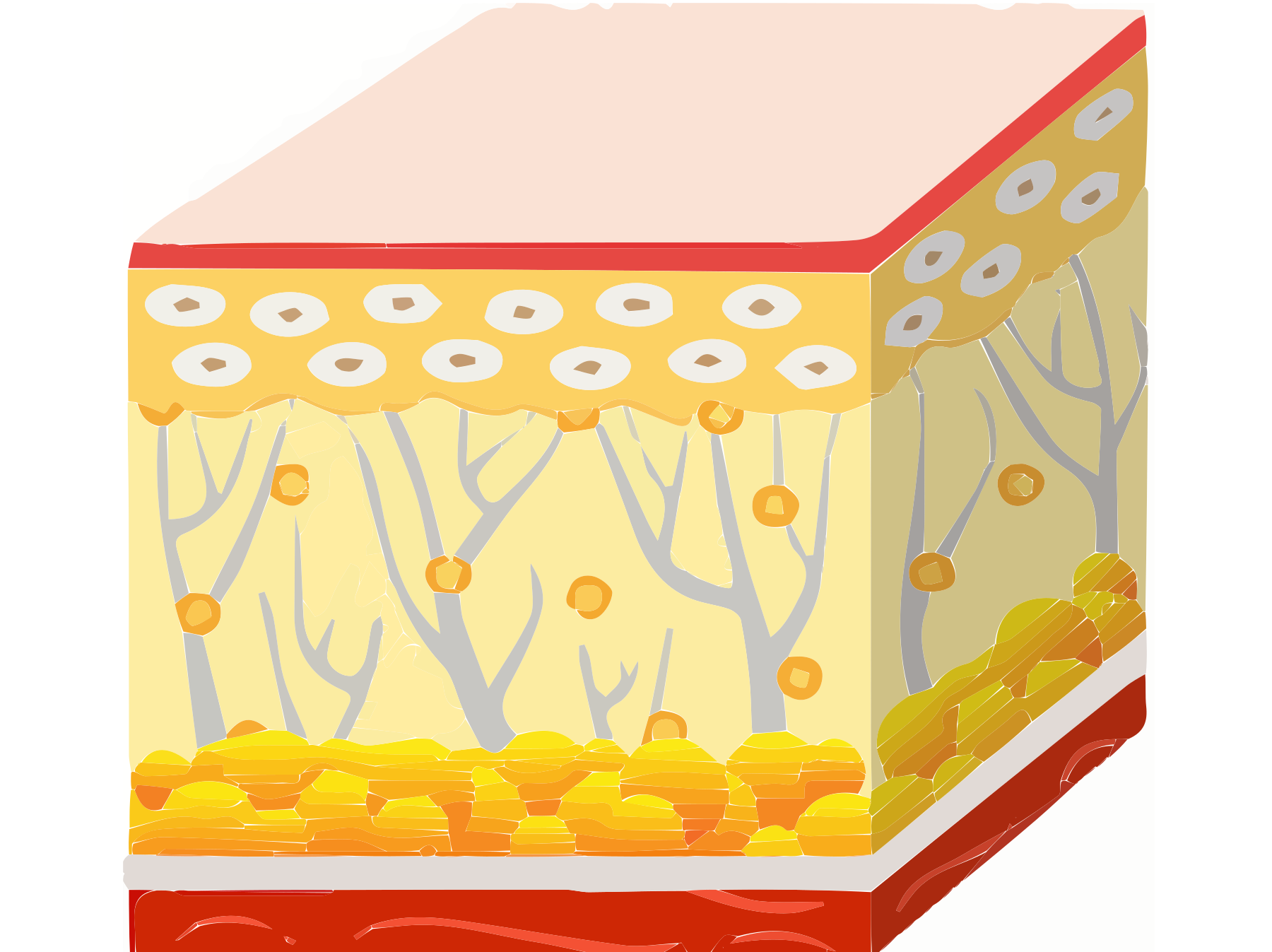Layers of the skin
Hover over each layer to reveal detailed descriptions and observe the impact of various non-surgical modalities on the respective surfaces. Explore the layers for an insightful understanding of how these interventions influence cosmetic enhancement.

Muscle
Muscles serve as the foundational framework for the body’s aesthetic appearance, contributing to symmetry, toning, and youthful vitality. In the realm of cosmetics, well-defined muscles play a key role in achieving sculpted physiques, while cosmetic procedures often consider the underlying muscle structure for optimal outcomes.
SMAS Layer
The SMAS (Superficial Musculo-Aponeurotic System) is a layer of tissue within the face, primarily beneath the skin.
Traditional facelift surgeries involve lifting and tightening the SMAS layer to address sagging skin and restore a more youthful look.
HIFU is the only effective non-surgical modality that can target the SMAS layer of skin for tightening.
Adipose Tissue
Also known as subcutaneous fat, this layer contributes to the volume and contours of the face, particularly in areas such as the cheeks, lips and temples.
Reticular Dermis
The reticular dermis, a deeper layer of the skin, is vital in cosmetic procedures as it contains collagen and elastin fibers crucial for skin firmness and elasticity. Its role in supporting the skin’s structure makes it a key consideration in anti-aging treatments and skin rejuvenation strategies.
Papillary Dermis
The papillary dermis, situated closer to the surface of the skin, plays a significant cosmetic role by contributing to skin texture and supporting blood vessels. It is a focal point for cosmetic interventions, particularly in procedures addressing fine lines, wrinkles, and overall skin texture enhancement.
Epidermis
The epidermis, the outermost layer of the skin, is pivotal in cosmetics as it determines the skin’s appearance, texture, and barrier function. Cosmetic treatments often target the epidermis to address issues like pigmentation, texture irregularities, and overall skin tone for a rejuvenated and radiant complexion.
